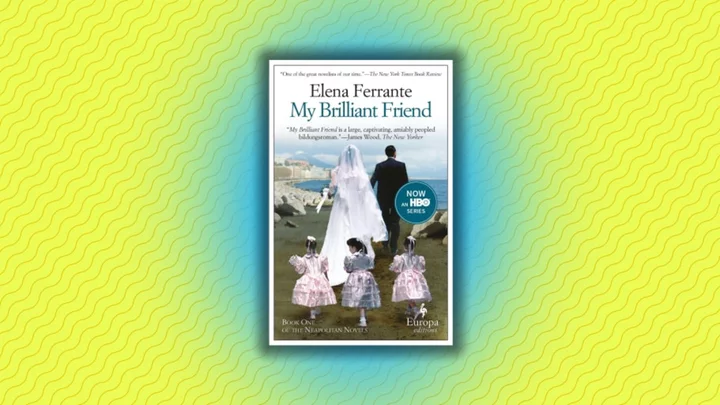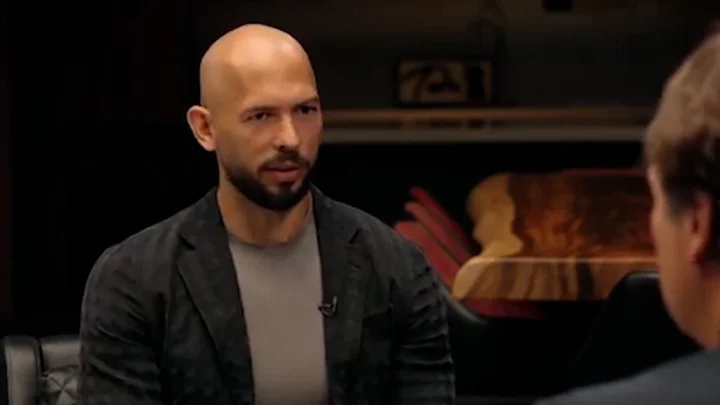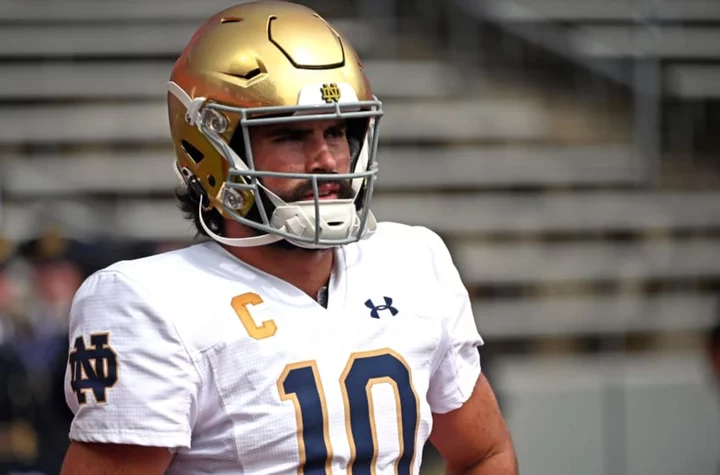Readers around the world were transported to post-war Naples by My Brilliant Friend (L’amica Geniale in Italian), the first entry of Elena Ferrante’s sprawling but intensely personal Neapolitan quartet. Though the novel’s famously anonymous author can be taciturn and even contradictory in interviews, we can glean some insights about the book from her limited public words and those of her collaborators.
1. Author Elena Ferrante considers it part of a larger novel.
Many readers of My Brilliant Friend were happy to learn Elena and Lila’s story doesn’t end with the novel’s last page. The book is the first of a four-part series (collectively known as the Neapolitan Novels) that follows the contentious friendship of two Italian women from girlhood to late life. Though they were published separately, Ferrante has stated she considers My Brilliant Friend, The Story of a New Name, Those Who Leave and Those Who Stay, and The Story of the Lost Child four parts of “a single novel.”
2. My Brilliant Friend is hailed as a modern classic.
My Brilliant Friend was published in Italy in 2011, and it’s already regarded as a modern classic. Entertainment Weekly declared the four Neapolitan Novels to be the best book series of the decade in 2019. Other publications have gone further with their praise; according to lists from Vulture and The Guardian, My Brilliant Friend ranks among the best books of the 21st century so far.
3. It’s been translated into 45 languages.
In addition to praise from critics, My Brilliant Friend has received massive financial success. Less than a decade after its release, the first installment of the Neapolitan Novels series had sold more than 5 million copies. The series has been published in 45 languages.
4. The author’s true identity is a mystery.
Reading the richly rendered account of a decades-long friendship between the two main characters of the books that make up her Neapolitan quartet, many readers felt they knew Ferrante themselves. That literary intimacy was complicated by the fact that Ferrante’s true identity remains unconfirmed; “Elena Ferrante” is a pen name.
Frantumaglia (a “jumble of fragments”) is a collection of Ferrante’s ostensibly non-fiction writing. Despite her self-professed goal “to orchestrate lies that always tell … the truth” in interviews, those fragments offer an opportunity to draw conclusions about the “real” Ferrante. Naples apparently holds a central place in her life, though she “ran away as soon as [she] could.” She loves to write, but is beset by fear and self-doubt. The book offers numerous explanations for Ferrante’s anonymity, including “a somewhat neurotic desire for intangibility” and a lack of “physical courage.” These self-deprecating remarks surely represent a facet of Ferrante’s reluctance, but she suggests a deeper current guiding her decision: “Writing with the knowledge that I don’t have to appear produces a space of absolute creative freedom. It’s a corner of my own that I intend to defend.”
5. The cover is intentionally cheesy.
My Brilliant Friend is regarded as a modern literary classic, but you wouldn’t necessarily know it based on its appearance. The covers used throughout the series, which feature heavily edited photographs of faceless stock models, have been compared to those of supermarket romance novels. The publishers claim the incongruous cheesiness is intentional. Ferrante’s art director told Slate in 2015, “many people didn’t understand the game we we’re playing, that of, let’s say, dressing an extremely refined story with a touch of vulgarity.”
6. The first draft let both friends narrate.
One of the driving tensions of My Brilliant Friend revolves around identifying the eponymous brilliant friend. Readers might easily imagine the title being spoken by the novel’s narrator, Elena “Lenù” Greco. She describes her friend Lila as “the best among us” while calling herself “second in everything.” And though the book revolves, in many ways, around the ever-changing perceptions the girls have of themselves and one another, it still can feel revelatory to read, for the first time, the moment when Lila tells Elena (emphasis added), “you’re my brilliant friend, you have to be the best of all, boys and girls.”
This sudden yet seemingly inevitable upending of our expectations may not have landed with the same weight if the narrative wasn’t told completely from Elena’s perspective. Interestingly, the choice to tell the story in this way wasn’t always clear to Ferrante.
She told an interviewer that “there were long episodes” written by Lila in the first draft of the novel. Ferrante eventually decided that the book required a single narrator, leaving readers to wonder what Lila might have written about the moment her formal education ends, or imagining the prose she may have crafted in writing her story of The Blue Fairy.
7. It was adapted into an HBO series.
Following their massive critical and commercial success, it was only a matter of time before Ferrante’s Neopolitan Novels were adapted for the screen. The first season of the television series My Brilliant Friend, a co-production from HBO and Italian broadcaster Rai, premiered in 2018. Though it shares a title with the first book in the series, the show will eventually cover all four novels, with each season adapting a different installment. The third season aired in 2022, and the release date of the fourth and final season has yet to be announced.
8. Ferrante can’t pin down the inspiration for the novel.
My Brilliant Friend’s Italian director Saverio Costanzo reportedly faced budgetary and schedule restrictions, and he nearly removed the novel’s culminating wedding scene from his adaptation. Ferrante, whom he collaborated with through email, apparently pressed upon him: “Listen, the first moment I thought about My Brilliant Friend, the first image I had was a banquet, a very vulgar banquet of Neapolitan life. Please put the banquet back in.”
Costanzo acquiesced, but he would perhaps not be entirely surprised to learn that his enigmatic colleague has told different versions of the novel’s inception. In an interview, Ferrante declared that she’s unable to give a “precise answer” identifying the original idea for the book, mentioning a friend’s death, a wedding, and even her own novel, The Lost Daughter, as possible kernels that would eventually develop into the four-part story.
9. A graphic novel adaptation is coming October 2023.
Since being adapted for the screen, My Brilliant Friend has been reimagined as a graphic novel. The new book from Europa Editions features Mara Cerri’s illustrations and text adapted by Chiara Lagani from Ferrante’s original text. Ann Goldstein, who translated the novels, also translated the illustrated adaptation for English readers. It’s slated to hit shelves in October 2023, and is currently available for preorder.
10. My Brilliant Friend is a literary funhouse mirror.
Events and identities seem to echo throughout Ferrante’s work, not just within individual novels but through wide swaths of literature. Ferrante has said that she “read[s] a lot, but in a disorderly way,” and one can imagine her writing, among other things, serving a kind of organizing and complicating function as she traces and retraces memories, real and literary.
Elena is the name of the narrator in My Brilliant Friend, and of the main character’s child in Ferrante’s earlier book, The Lost Daughter. It’s also the first name in her nom de plume, of course, an identity with its own echoes of the Italian author Elsa Morante, whose work Ferrante has expressed admiration for on numerous occasions. From Virgil to Louisa May Alcott to Lenù and Ferrante themselves, writers seem to float in and out of the book’s margins, influencing the author and characters all at once.
This article was originally published on www.mentalfloss.com as 10 Facts About ‘My Brilliant Friend’.









